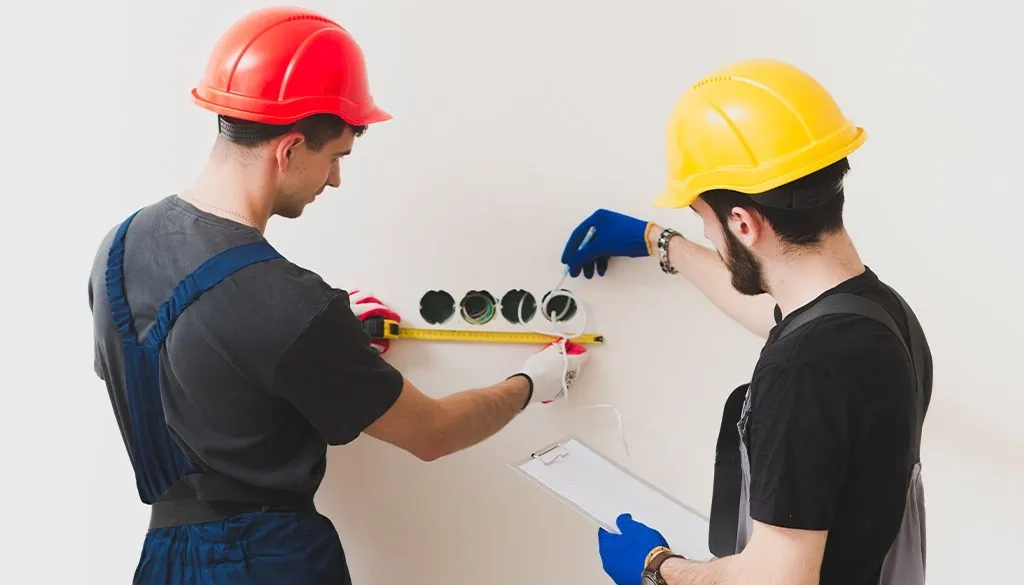For sustainable business practices, opt for eco-friendly building materials like bamboo, recycled steel, and reclaimed wood. These choices enhance durability and energy efficiency while reducing environmental impact. By using materials like recycled steel, bamboo, reclaimed wood, and cork, you can lower your ecological footprint. Implement sustainable strategies such as incorporating recycled materials, designing for energy efficiency, conserving water, and managing waste in construction. Select materials with low embodied energy, certifications like Cradle to Cradle, and locally sourced options to minimize emissions. Collaborate with suppliers who prioritize eco-friendly practices to ensure sustainability in your projects. Enhance your journey towards sustainability with these effective approaches.
Key Takeaways
- Utilize recycled steel, bamboo, and reclaimed wood for sustainability.
- Prioritize materials with low embodied energy and recycled content.
- Seek certifications like Cradle to Cradle for eco-friendly assurance.
- Source locally to reduce transportation emissions and support communities.
- Choose renewable, non-toxic options for healthier indoor air quality.
Importance of Sustainable Building Materials
Sustainable building materials guide play a pivotal role in shaping the future of construction practices and environmental stewardship. They offer durability, energy efficiency, and reduced environmental impact. Materials like bamboo, recycled steel, and reclaimed wood promote sustainability by conserving resources and reducing carbon footprint. Incorporating these materials into construction projects aligns with the growing demand for eco-conscious solutions, nurturing a sense of belonging to a greener future.
Benefits of Using Eco-Friendly Materials
Utilizing environmentally-friendly materials in construction projects demonstrates a dedication to environmental responsibility and long-term sustainability.
- Cost Savings: Eco-conscious materials can lead to reduced energy costs.
- Health Benefits: They contribute to better indoor air quality.
- Durability: Many eco-conscious materials are long-lasting.
- Environmental Impact: They help reduce the carbon footprint of buildings.
Types of Sustainable Building Materials
When considering construction projects with a focus on environmental responsibility, exploring the wide array of sustainable building materials available becomes vital. These materials include recycled steel, bamboo, reclaimed wood, and cork. Moreover, eco-friendly options like straw bales, rammed earth, and mycelium are gaining popularity for their low environmental impact. Understanding the benefits and characteristics of each type is necessary for making well-informed choices in sustainable construction.
Incorporating Sustainability in Construction Projects
Implementing environmentally conscious practices in construction projects is crucial for nurturing sustainability in the building industry.
- Use of recycled materials: Incorporating materials like reclaimed wood reduces the demand for new resources.
- Energy-efficient design: Implementing designs that optimize natural lighting and ventilation can reduce energy consumption.
- Water conservation strategies: Installing low-flow fixtures and utilizing water recycling systems help conserve water resources.
- Waste management practices: Implementing proper waste sorting and recycling programs minimizes construction waste impact.
Tips for Choosing the Right Eco-Friendly Materials
Within the domain of sustainable construction practices, one essential aspect lies in choosing the most appropriate environmentally-friendly materials for your projects. Consider materials with low embodied energy, recycled content, and certifications like Cradle to Cradle. Prioritize locally sourced materials to reduce transportation emissions. Opt for renewable and non-toxic options for healthier indoor air quality. Engage with suppliers committed to eco-friendly practices to e sustainability throughout your projects.

Frequently Asked Questions
How Can Sustainable Building Materials Impact the Overall Cost of a Construction Project?
Sustainable building materials can impact construction costs by initially seeming costlier but offering long-term savings through energy efficiency, reduced upkeep, and potential tax incentives. Quality materials can improve building longevity, lower operational expenses, and boost property value.
Are There Any Governmental Regulations or Incentives Promoting the Use of Eco-Friendly Materials in Construction?
Governmental regulations and incentives are increasingly promoting the use of environmentally friendly materials in construction. These measures aim to diminish environmental impact, ameliorate energy efficiency, and advance sustainability standards within the building industry, cultivating a shift towards greener practices.
What Are Some Innovative Sustainable Building Materials That Are Gaining Popularity in the Industry?
Cutting-edge sustainable building materials gaining industry popularity include cross-laminated timber for its strength and sustainability, recycled steel for durability, and hempcrete for its eco-friendly properties. These materials offer solutions for environmentally conscious construction projects.
How Can Businesses Ensure the Durability and Longevity of Structures Built With Sustainable Materials?
To guarantee strength and lastingness of structures constructed with eco-friendly materials, businesses should prioritize material selection based on climate and local conditions, invest in quality installation practices, conduct regular maintenance, and capitalize on pioneering technologies like green roofs and solar panels for improved sustainability.
Are There Any Certifications or Standards That Businesses Should Look for When Selecting Eco-Friendly Building Materials?
When selecting environmentally friendly building materials, businesses should prioritize certifications like LEED, Green Seal, or Energy Star. These standards guarantee products meet specific sustainability criteria, helping companies make informed choices that align with their environmental goals and values.
Conclusion
In summary, the use of eco-friendly building materials is essential in promoting sustainability and reducing environmental impact in construction projects. By incorporating sustainable materials, businesses can improve energy efficiency, minimize carbon footprint, and create a healthier environment. Understanding the importance of selecting the right materials and implementing sustainable practices is key to driving long-term viability and positioning organizations as leaders in the global movement towards eco-conscious business operations.
You May Also Like:





